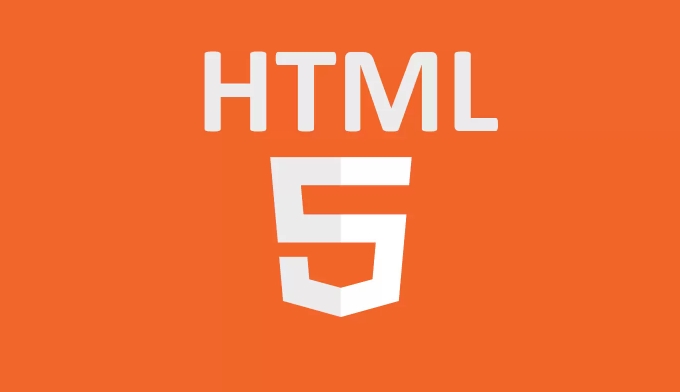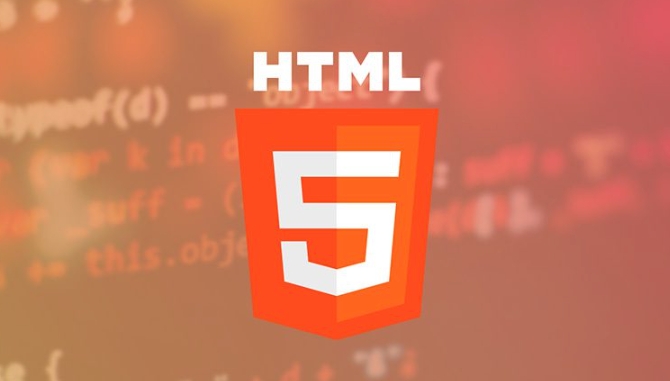Handling network status changes with HTML5 online/offline events
Jul 06, 2025 am 01:35 AMHTML5 realizes network state change detection through online/offline events. The specific methods are: 1. Use window.addEventListener to listen for 'online' and 'offline' events respectively; 2. Write a callback function to handle network state changes, such as prompting the user, pausing asynchronous requests or switching local cache mode; 3. You can dynamically display the network state with the navigator.onLine attribute and DOM element. Notes include: Events only reflect whether the browser is connected to the network rather than the server accessibility. Mobile devices may frequently trigger events that require anti-shake processing, and it is recommended to improve the accuracy of judgment based on heartbeat requests.

HTML5 provides online/offline events, which can be used to monitor changes in users' network status. This function is very useful in web applications that need to adjust behavior according to network connection conditions, such as reminding users that there is currently no network, pausing data synchronization, etc.

How to detect changes in network status
HTML5's window object provides two events: online and offline . These two events are triggered when the browser detects that a network connection status has changed.

You can add listeners in the following ways:
window.addEventListener('online', function() {
console.log('Network Recovered');
});
window.addEventListener('offline', function() {
console.log('Network is disconnected');
});These events are suitable for most modern browsers, including Chrome, Firefox, Edge, and more. However, it should be noted that they only reflect whether the browser can access the network, not whether the server is accessible.

Common usage scenarios and suggestions
- Prompt the user's network status : When the user is disconnected from the Internet, a prompt bar is displayed to tell them that they are currently unable to connect to the Internet.
- Pause asynchronous request : Pause the sending of AJAX request when the network is disconnected, and wait until the network is restored before continuing.
- Switch local cache mode : You can enable locally stored data offline to improve user experience.
For example, you can add a status indicator to the page:
<div id="status" style="max-width:90%"></div>
Then use JavaScript to control its display content:
window.addEventListener('online', updateNetworkStatus);
window.addEventListener('offline', updateNetworkStatus);
function updateNetworkStatus() {
const status = navigator.onLine ? 'online' : 'offline';
const statusDiv = document.getElementById('status');
statusDiv.textContent = 'Current status:' status;
statusDiv.style.display = 'block';
}Notes and limitations
Although the HTML5 online/offline event is very practical, there are several things to note:
- They rely on the browser's network detection mechanism and may not be accurate enough. For example, even if the browser thinks it is online, it may not be able to access your server.
- On mobile devices, network status may be switched frequently, resulting in events being triggered multiple times and requiring anti-shake processing.
- Some browser extensions or proxy settings may interfere with the judgment of network status.
- It is not supported to determine which website is unreachable, and it can only determine whether there is a network connection.
If your application has high requirements for judging network status, it is recommended to combine other methods, such as sending heartbeat requests to the server regularly to confirm connectivity.
summary
Basically that's it. HTML5's online/offline event is a lightweight and convenient tool suitable for basic network state awareness. Although it has some limitations, it is enough in many scenarios. The rational use of these events can significantly improve the robustness and user experience of web applications.
The above is the detailed content of Handling network status changes with HTML5 online/offline events. For more information, please follow other related articles on the PHP Chinese website!

Hot AI Tools

Undress AI Tool
Undress images for free

Undresser.AI Undress
AI-powered app for creating realistic nude photos

AI Clothes Remover
Online AI tool for removing clothes from photos.

Clothoff.io
AI clothes remover

Video Face Swap
Swap faces in any video effortlessly with our completely free AI face swap tool!

Hot Article

Hot Tools

Notepad++7.3.1
Easy-to-use and free code editor

SublimeText3 Chinese version
Chinese version, very easy to use

Zend Studio 13.0.1
Powerful PHP integrated development environment

Dreamweaver CS6
Visual web development tools

SublimeText3 Mac version
God-level code editing software (SublimeText3)

Hot Topics
 Audio and Video: HTML5 VS Youtube Embedding
Jun 19, 2025 am 12:51 AM
Audio and Video: HTML5 VS Youtube Embedding
Jun 19, 2025 am 12:51 AM
HTML5isbetterforcontrolandcustomization,whileYouTubeisbetterforeaseandperformance.1)HTML5allowsfortailoreduserexperiencesbutrequiresmanagingcodecsandcompatibility.2)YouTubeofferssimpleembeddingwithoptimizedperformancebutlimitscontroloverappearanceand
 Audio and Video: can i record it?
Jun 14, 2025 am 12:15 AM
Audio and Video: can i record it?
Jun 14, 2025 am 12:15 AM
Yes,youcanrecordaudioandvideo.Here'show:1)Foraudio,useasoundcheckscripttofindthequietestspotandtestlevels.2)Forvideo,useOpenCVtomonitorbrightnessandadjustlighting.3)Torecordbothsimultaneously,usethreadinginPythonforsynchronization,oroptforuser-friend
 Adding drag and drop functionality using the HTML5 Drag and Drop API.
Jul 05, 2025 am 02:43 AM
Adding drag and drop functionality using the HTML5 Drag and Drop API.
Jul 05, 2025 am 02:43 AM
The way to add drag and drop functionality to a web page is to use HTML5's DragandDrop API, which is natively supported without additional libraries. The specific steps are as follows: 1. Set the element draggable="true" to enable drag; 2. Listen to dragstart, dragover, drop and dragend events; 3. Set data in dragstart, block default behavior in dragover, and handle logic in drop. In addition, element movement can be achieved through appendChild and file upload can be achieved through e.dataTransfer.files. Note: preventDefault must be called
 Adding Audio and Video to HTML: Best Practices and Examples
Jun 13, 2025 am 12:01 AM
Adding Audio and Video to HTML: Best Practices and Examples
Jun 13, 2025 am 12:01 AM
Use and elements to add audio and video to HTML. 1) Use elements to embed audio, make sure to include controls attributes and alternate text. 2) Use elements to embed video, set width and height attributes, and provide multiple video sources to ensure compatibility. 3) Add subtitles to improve accessibility. 4) Optimize performance through adaptive bit rate streaming and delayed loading. 5) Avoid automatic playback unless muted, ensuring user control and a clear interface.
 What is the purpose of the input type='range'?
Jun 23, 2025 am 12:17 AM
What is the purpose of the input type='range'?
Jun 23, 2025 am 12:17 AM
inputtype="range" is used to create a slider control, allowing the user to select a value from a predefined range. 1. It is mainly suitable for scenes where values ??need to be selected intuitively, such as adjusting volume, brightness or scoring systems; 2. The basic structure includes min, max and step attributes, which set the minimum value, maximum value and step size respectively; 3. This value can be obtained and used in real time through JavaScript to improve the interactive experience; 4. It is recommended to display the current value and pay attention to accessibility and browser compatibility issues when using it.
 How can you animate an SVG with CSS?
Jun 30, 2025 am 02:06 AM
How can you animate an SVG with CSS?
Jun 30, 2025 am 02:06 AM
AnimatingSVGwithCSSispossibleusingkeyframesforbasicanimationsandtransitionsforinteractiveeffects.1.Use@keyframestodefineanimationstagesforpropertieslikescale,opacity,andcolor.2.ApplytheanimationtoSVGelementssuchas,,orviaCSSclasses.3.Forhoverorstate-b
 HTML audio and video: Examples
Jun 19, 2025 am 12:54 AM
HTML audio and video: Examples
Jun 19, 2025 am 12:54 AM
Audio and video elements in HTML can improve the dynamics and user experience of web pages. 1. Embed audio files using elements and realize automatic and loop playback of background music through autoplay and loop properties. 2. Use elements to embed video files, set width and height and controls properties, and provide multiple formats to ensure browser compatibility.
 What is WebRTC and what are its main use cases?
Jun 24, 2025 am 12:47 AM
What is WebRTC and what are its main use cases?
Jun 24, 2025 am 12:47 AM
WebRTC is a free, open source technology that supports real-time communication between browsers and devices. It realizes audio and video capture, encoding and point-to-point transmission through built-in API, without plug-ins. Its working principle includes: 1. The browser captures audio and video input; 2. The data is encoded and transmitted directly to another browser through a security protocol; 3. The signaling server assists in the initial connection but does not participate in media transmission; 4. The connection is established to achieve low-latency direct communication. The main application scenarios are: 1. Video conferencing (such as GoogleMeet, Jitsi); 2. Customer service voice/video chat; 3. Online games and collaborative applications; 4. IoT and real-time monitoring. Its advantages are cross-platform compatibility, no download required, default encryption and low latency, suitable for point-to-point communication






